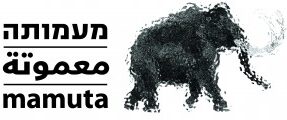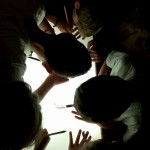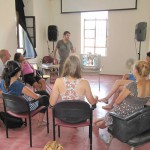Mamuta workshops are given by outstanding artists and educators. We give workshops for young, kids and adults and all of the workshops are adapted to the interest of the different groups.
The Mamuta Project is a center for artistic creation, encounters, research, and display of art. In collaboration with the center’s daily work – which includes art and technological projects that relate to our time and to the space in which they exist – we offer enrichment days that include tours of one of the most fascinating places in Jerusalem (the building which was formerly a leper hospital) and artistic-technological workshops, where the participants can experience a unique form of creation and expand their imagination to new horizons, all while getting familiar with modern art and new technologies.
Mamuta’s workshops are flexible and can be set up according to the group’s needs. All of the artists that run the workshops deal with art on a daily basis and are experienced at guiding workshops. We will be happy to schedule a meeting at the center itself or answer your questions via email. Contact us.
בסדנה יתנסו המשתתפים ביצירה של חומר קולנועי דרך מניפולציה של פילם של 16 מ״מ: ציור, חריטה וכו’ וילמדו
על האפשרויות שנוצרות בהקרנה של הפילם. זו הזדמנות יחידה וייחודית לעבוד עם פילם ולהתנסות בטכניקות ניסיוניות
של עבודה עם חומר במסגרת העשייה הקולנועי.
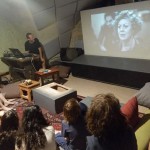
Follies & Soundtrack for films)
How we can create the soundtrack for a film? How we can add meaning to a story through sound? We’ll record, edit and watch the film with our own soundtracks.
These workshops examine the connection between sound and an image or object. The participants will take part in creating background sound effects for a scene (Foley), sound editing and atmosphere designing. The workshops present multiple techniques, some with modern digital sound technology, and some with basic electronical part
סדנת פסקול
הסדנאות בוחנות את הקשר בין צליל לדימויאובייקט. המשתתפים מתנסים בהכנת רעשי רקע לסצנה (פוליז), עריכת סאונד ועיצוב אווירה. בין הנושאים העולים בסדנאות: תכונות של צליל והקשר בין תכונות חומריות לצליל. הסדנאות מציגות מספר טכניקות, חלקן בטכנולוגיות סאונד דיגיטליות חדשניות מהשנים האחרונות ואחרות נשענות על רכיבים אלקטרוניים ותיקים ובסיסיים..
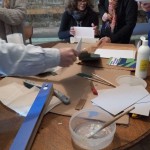
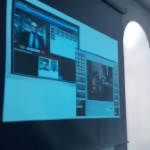
How does software recognize faces? The different uses for facial recognition and discussion of the questions that will arise (privacy vs. safety). Facial expressions, recognizing expressions. The use of face muscles in art. Face-swapping – demonstrating the idea using art. Demonstrating my facial recognition and analysis program / Facial expressions and face-swapping
סדנת זיהוי פנים איך תוכנה מזהה פנים? השימושים השונים של זיהוי פנים והשאלות שעולות (פרטיות לעומת בטחון) הפנים כממשק – הבעות פנים, זיהוי הבעות השימוש בשרירי פנים באמנות החלפת פנים – הדגמה של הרעיון באמנות הדגמה של התוכנה שלי לזיהוי וניתוח פנים / הבעות והחלפת פנים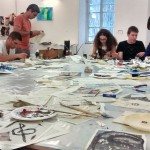
סדנאות הדפס:
טכניקת ההדפס משלבת בתוכה מסורת וחדשנות ומלווה אותנו בציר הזמן.
עוד משחר ההיסטוריה אנשי המערות הטביעו את כפות ידיהם על קירות המערות, ומאז הדפוס השתכלל והתפתח דרך הדפסת ספרי קודש, כתבי יד מאויירים, תחריטים, יצירות אמנות, טקסטיל, עיתונות, פירסומות, ועד להדפסה תלת מימדית בימינו.
אמנים רבים משתמשים בטכניקות שונות של הדפס על מנת להעביר מסרים על החברה והתקופה בה הם יוצרים. היום בעידן הדיגיטלי ההדפס נמצא בצומת חשובה, חלק מעולם הדפוס נעלם לטובת תחליפים דיגיטליים ובמקביל מתפתחות טכניקות דפוס חדשניות כגון תלת מימד, בדים חכמים ועוד.
בסדנאות הדפוס נטעם טכניקות בסיסיות מתחום ההדפס וניישם אותi על חומרים שונים, בהתייחסות לעבר ולעתיד של המדיום.
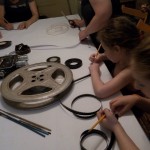
For other workshops and questions don’t hesitate to contact us!
with Hagit Keysar and Yossi Attia The program will teach technology as an everyday practice in the lives of the participants, through which they can understand their potential for setting in motion social, civic, and creative processes in the public space and in the specific context of Jerusalem. It seeks to create the conditions in which the participants, 15- to 17-year-old living in Jerusalem, can turn from user-consumers to user-creators.
About the project
This project is based on the links between art, media and geography as a political, social, economic and pedagogical force. It seeks to create the conditions by which participants will be able to take active part in re/producing the physical and virtual public domains through art and creative use of multimedia. By doing so, they will grow deep understanding of existing mechanisms and will be able to address them with independent and creative alternatives. The program will be based on open-source in spirit and practice, using this sphere of participation and collaboration as its infrastructure and central methodological component.
An interdisciplinary series of workshops will be given by artists and creators in the fields of media, geography, urban planning, and technology. The participants will construct a website—the project’s home site. The “home site” and the “home,” as a physical and conceptual site, will be a starting point for the examination of concepts such as belonging, ownership, privacy, and participation in the specific geography of Jerusalem. A creative approach to mapping will allow the group to locate the private space—the house and familiar surroundings of every one of the participants—in a broad urban context, in an attempt to locate common ground. Is it possible to find or re-invent spaces of participation that overcome the barriers of the urban space in Jerusalem? Through a process of idiosyncratic, non-conventional mapping, we will try to reread the city and to locate spatial narratives that cannot be easily observed in daily life experience.

For other workshops and questions don’t hesitate to contact us!
